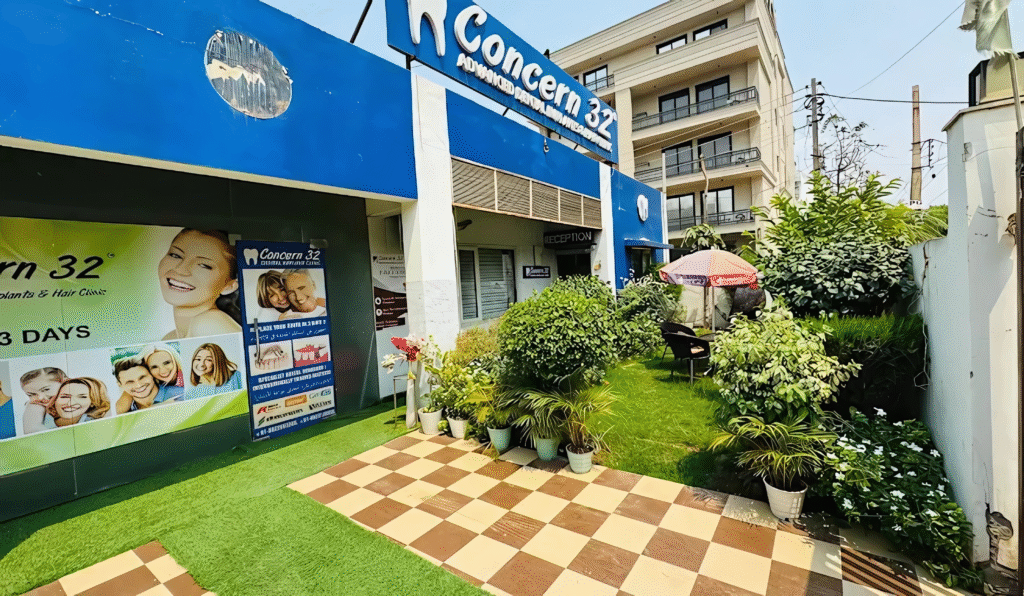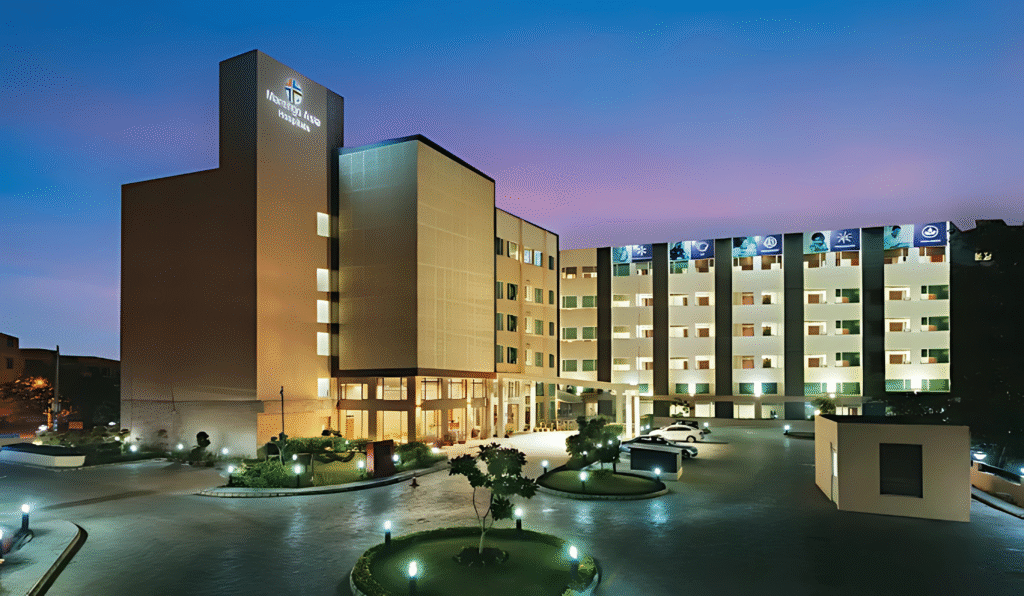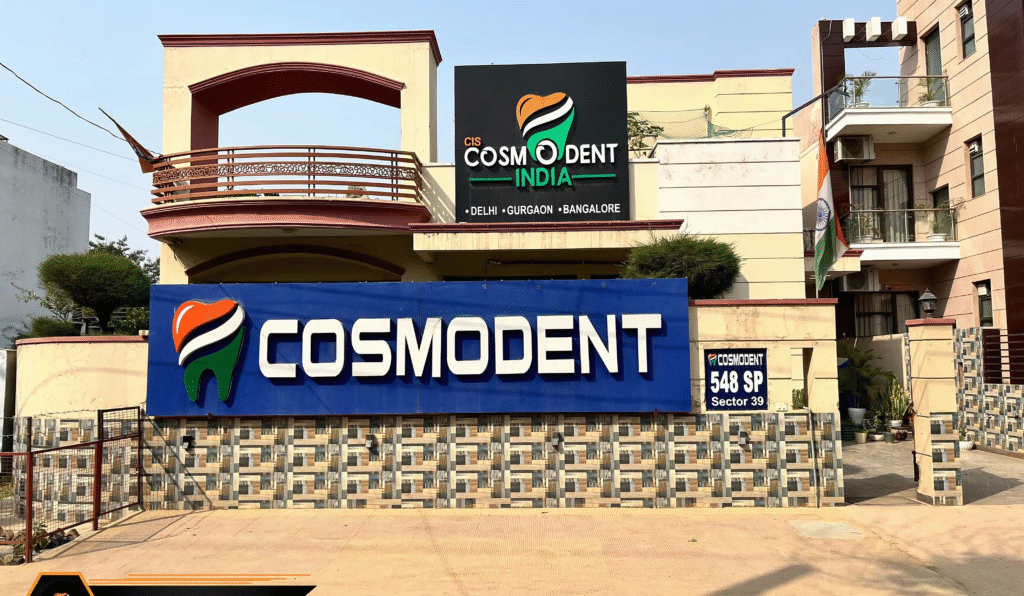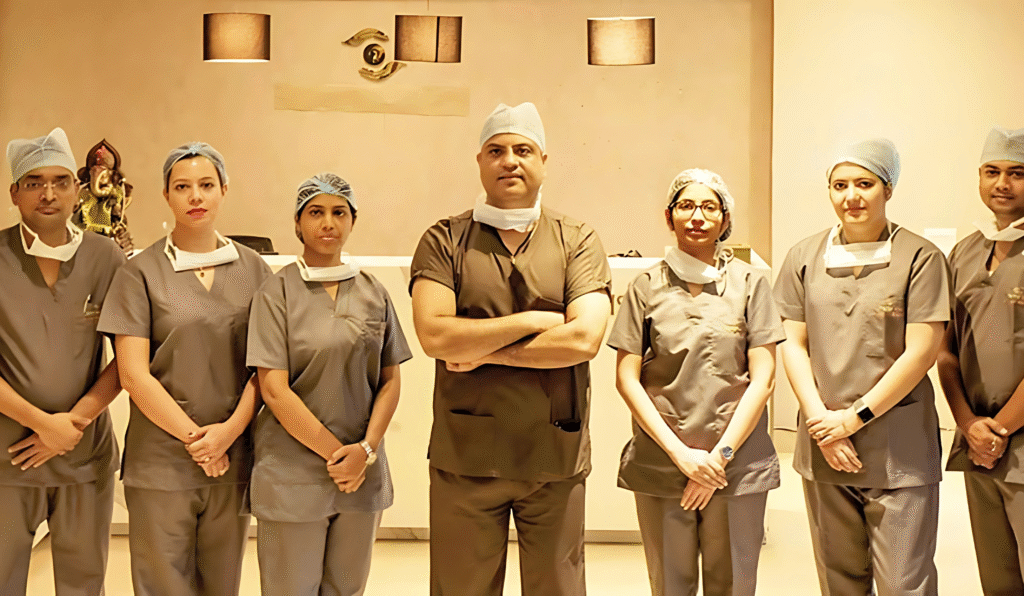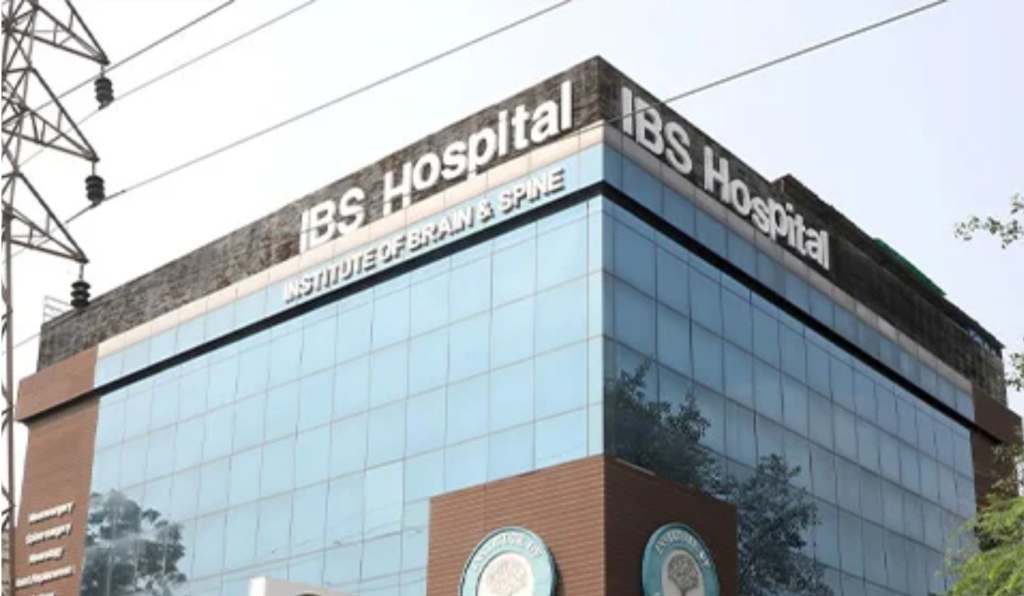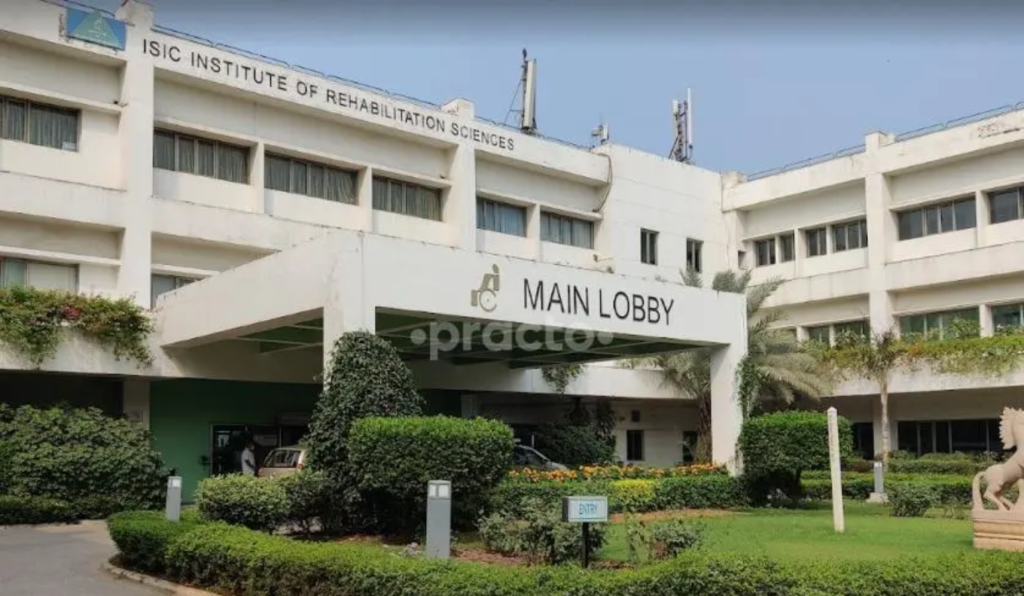Prostate Cancer Treatment Cost in India

What is Liver Cancer?
Liver cancer is a type of cancer that begins in the tissues of the liver, one of the largest and most vital organs in the body. It helps process nutrients, filter toxins, and produce bile for digestion. Liver cancer typically occurs when abnormal cells grow uncontrollably in the liver, forming a tumor.
The two primary types of liver cancer include:
Hepatocellular Carcinoma (HCC): The most common type, originating in the main liver cells called hepatocytes.
Cholangiocarcinoma (Bile Duct Cancer): Arises in the bile ducts that connect the liver to the gallbladder and small intestine.
These cancers can either begin in the liver (primary liver cancer) or spread to the liver from other organs (secondary or metastatic liver cancer). Early diagnosis greatly improves the chances of successful treatment.
How Does Liver Cancer Develop?
Liver cancer develops when liver cells undergo mutations due to chronic inflammation or damage, causing them to grow uncontrollably. These abnormal cells can form tumors that may invade nearby tissues or spread to distant organs.
In Hepatocellular Carcinoma (HCC), the cancer begins in the hepatocytes—often as a result of chronic liver diseases such as hepatitis or cirrhosis.
In Cholangiocarcinoma, the cancer develops in the bile ducts, which may be triggered by conditions like primary sclerosing cholangitis or liver fluke infections.
The stages of development are:
Liver Damage or Infection: Long-term inflammation caused by hepatitis, alcohol, or fatty liver disease.
Mutation of Liver Cells or Bile Duct Cells: Genetic changes disrupt normal cell behavior.
Tumor Formation: Abnormal cells grow into a malignant tumor.
Invasion and Metastasis: Cancer spreads to blood vessels, lymph nodes, or distant organs.
Causes and Risk Factors of Liver Cancer
Liver cancer can develop due to a range of underlying causes and risk factors that trigger liver damage and long-term inflammation. These vary slightly between Hepatocellular Carcinoma (HCC) and Cholangiocarcinoma, but many are interrelated.
🔹 Common Causes and Risk Factors
- Chronic Hepatitis B or C Infection
Long-term viral hepatitis is the most significant risk factor, especially for HCC. These infections cause ongoing inflammation that can lead to cirrhosis and eventually cancer. - Cirrhosis
A condition where healthy liver tissue is replaced with scar tissue. It results from chronic alcohol abuse, viral hepatitis, or fatty liver disease and significantly raises liver cancer risk. - Non-Alcoholic Fatty Liver Disease (NAFLD)
This lifestyle-related condition is increasingly common due to obesity and diabetes, leading to cirrhosis and raising the risk of HCC. - Excessive Alcohol Consumption
Chronic alcohol intake damages liver cells, promoting cirrhosis and increasing liver cancer risk. - Aflatoxin Exposure
A toxin produced by fungi on stored grains and nuts, more common in developing countries. It can lead to mutations in liver cells. - Diabetes and Obesity
Both conditions increase fat accumulation and inflammation in the liver, promoting liver damage and cancer.
🔹 Specific Risk Factors for Cholangiocarcinoma
- Primary Sclerosing Cholangitis (PSC)
A chronic liver disease that inflames and scars the bile ducts. - Bile Duct Stones or Infections
Prolonged irritation in the bile ducts may cause mutations in the ductal cells. - Liver Fluke Infections
Common in certain parts of Asia, these parasites can lead to chronic inflammation in the bile ducts. - Congenital Bile Duct Abnormalities
Certain inherited conditions increase the risk of bile duct cancer.
Symptoms of Liver Cancer
Liver cancer often does not cause noticeable symptoms in its early stages. As the disease progresses, symptoms begin to appear and may vary depending on the type of liver cancer — Hepatocellular Carcinoma (HCC) or Cholangiocarcinoma.
🔹 Common Symptoms of Liver Cancer:
Unexplained weight loss
Rapid and unexplained weight loss without changes in diet or physical activity.Loss of appetite
Feeling full quickly or disinterest in food, leading to reduced intake.Upper abdominal pain
Persistent discomfort or sharp pain on the right side, just below the ribs.Swelling in the abdomen (Ascites)
Fluid buildup in the belly area, causing visible bloating and discomfort.Fatigue and weakness
A constant feeling of tiredness and lack of energy, even with enough rest.Nausea and vomiting
Digestive issues that interfere with eating and nutrition.Yellowing of the skin and eyes (Jaundice)
A key sign that liver function is impaired, often seen in advanced cases or Cholangiocarcinoma.Dark-colored urine and pale stools
Another indicator of liver dysfunction due to blocked bile flow.
🔹 Additional Symptoms in Cholangiocarcinoma:
Itchy skin
Caused by bile salt accumulation in the skin.Fever and night sweats
May occur if the cancer obstructs bile ducts and causes infection.
Because liver cancer symptoms are often nonspecific and resemble other liver conditions, early detection through screening is especially important for those with chronic liver disease or at high risk.
Types of Liver Cancer
Liver cancer can be classified into primary (originating in the liver) and secondary (spread from other organs). In this section, we focus on primary liver cancers, which include two major types: Hepatocellular Carcinoma (HCC) and Cholangiocarcinoma.
Hepatocellular carcinoma is the most common type of primary liver cancer, accounting for nearly 75% of all liver cancer cases. It originates in hepatocytes, the main type of liver cells.
Who is at risk?
Patients with cirrhosis, chronic hepatitis B or C, or non-alcoholic fatty liver disease (NAFLD) are at higher risk.How does it grow?
HCC can grow as a single tumor or as multiple nodules in the liver. It can invade blood vessels and spread quickly to other parts of the body.Prognosis:
Early-stage HCC may be treated with surgery or ablation, but advanced cases may require targeted therapies or liver transplantation.
Cholangiocarcinoma begins in the bile ducts — the small tubes that carry bile from the liver to the intestine. It accounts for about 10-15% of primary liver cancers and is divided into three types:
Intrahepatic: Occurs in bile ducts within the liver.
Perihilar (Hilar): At the junction where right and left bile ducts meet.
Distal: Near the small intestine, outside the liver.
Who is at risk?
Patients with bile duct disorders, primary sclerosing cholangitis (PSC), or liver fluke infections are more vulnerable.How does it progress?
Cholangiocarcinoma often blocks bile flow, leading to jaundice. It tends to spread locally before showing distant metastasis.Prognosis:
Early detection improves outcomes, but this cancer is often diagnosed at an advanced stage. Treatment may include surgery, chemotherapy, or targeted therapy.
Hepatoblastoma:
A rare liver cancer primarily affecting children under age 4. It originates from immature liver cells and has a good prognosis if treated early.Angiosarcoma:
A rare and aggressive cancer that forms in the liver’s blood vessels. It progresses rapidly and has limited treatment options.
Which Type of Liver Cancer is the Most Dangerous?
Angiosarcoma and advanced-stage Cholangiocarcinoma are considered the most aggressive types of liver cancer due to their rapid progression, resistance to treatment, and high likelihood of spreading.
However, Hepatocellular Carcinoma (HCC) with vascular invasion or metastasis also carries a poor prognosis if not detected early.
Why Choose India for Treatment of Liver Cancer
India is emerging as a global destination for high-quality and affordable liver cancer care. With top-tier infrastructure, internationally accredited hospitals, and some of the best liver cancer specialists in the world, patients receive world-class treatment tailored to their condition. Here’s what makes India a preferred destination for liver cancer treatment:
India is home to renowned liver institutes and hepatobiliary departments dedicated exclusively to treating complex liver conditions, including Hepatocellular Carcinoma (HCC) and Cholangiocarcinoma. These centers are equipped with advanced diagnostic tools like liver elastography, multiphase CT, PET-CT, and high-resolution MRI that enable accurate staging and precision treatment planning. Many hospitals also offer liver transplant facilities under the same roof, ensuring continuity of care.
Indian hospitals attract some of the world’s most skilled oncologists, hepatologists, and liver transplant surgeons. These experts have trained and practiced in leading institutions across the US, UK, Europe, and Asia. With their multidisciplinary approach, patients benefit from a team that collaborates across specialties — including oncology, surgery, radiology, pathology, and gastroenterology — to design the most effective treatment plans.
India offers a comprehensive range of modern liver cancer treatments, including transarterial chemoembolization (TACE), targeted therapy, immunotherapy, radioembolization (TARE), and liver resection surgeries. In eligible cases, liver transplantation is also a life-saving option. Many centers also specialize in robotic-assisted surgeries and minimally invasive procedures, which reduce recovery time and post-surgical complications. Treatment is customized based on the type of liver cancer, stage, liver function, and overall patient health.
One of the major advantages of seeking treatment in India is the swift medical response. Indian hospitals are known for their efficient systems that ensure fast-tracked consultations, diagnostic tests, and surgical procedures. This is especially critical in cases of life-threatening illnesses like cancer or orthopedic trauma, where early treatment can significantly impact recovery and survival rates.
India provides world-class medical care at highly affordable prices. Compared to hospitals in the US, UK, or Australia, patients in India can save up to 60-80% on the total cost of treatment. Despite the lower costs, Indian hospitals follow international protocols, use FDA- and CE-approved medical devices, and maintain stringent standards for patient safety and hygiene. This affordability makes India a viable and attractive option for patients from around the world.
India is a global leader in medical tourism, offering:
✔ Dedicated international patient coordinators
✔ Medical visa assistance for easy travel
✔ Affordable accommodation & travel support
✔ Multilingual staff, including English-speaking doctors
This ensures a smooth and hassle-free experience for foreign patients traveling to India for treatment.
Different types of Treatments for Liver Cancer
The treatment approach for liver cancer depends on multiple factors, including the type of liver cancer (such as hepatocellular carcinoma or cholangiocarcinoma), the size and location of the tumor, how far it has spread, and the overall health of the patient. In India, patients have access to a wide range of advanced treatment options delivered by expert oncologists at world-class cancer centers. These treatments are often used alone or in combination to provide the most effective outcomes and can include chemotherapy, targeted therapy, immunotherapy, radiation, and liver-specific procedures like TACE.
Below are the most common and effective treatment options for liver cancer:
How it Works:
Chemotherapy uses powerful drugs to kill rapidly dividing cancer cells throughout the body. These drugs can be administered orally or intravenously, and they work by interfering with cancer cell growth and reproduction.
When It’s Used:
Chemotherapy is typically used when liver cancer has spread beyond the liver or when surgical options are not feasible. It may also be used alongside other treatments like TACE or radiation therapy.
Benefits:
Slows or stops cancer progression
Can shrink tumors before other procedures
Helps relieve symptoms in advanced stages
How it Works:
Targeted therapy drugs focus on specific molecules (such as proteins or genes) that drive cancer growth. In liver cancer, drugs like Sorafenib or Lenvatinib block these pathways, halting tumor progression without harming normal cells.
When It’s Used:
Targeted therapy is primarily used for advanced or unresectable liver cancer, particularly hepatocellular carcinoma. It is often the first-line treatment when surgery or transplantation isn’t an option.
Benefits:
Less toxic than traditional chemotherapy
Slows tumor growth effectively
Improves survival in advanced cases
How it Works:
Immunotherapy stimulates the body’s immune system to recognize and destroy cancer cells more effectively. Drugs such as nivolumab and atezolizumab are examples used in liver cancer treatment.
When It’s Used:
Immunotherapy is generally used for patients with advanced liver cancer or those who have not responded to targeted therapy or chemotherapy.
Benefits:
Boosts natural immune response against tumors
Offers longer-lasting protection in some patients
Fewer side effects than chemotherapy
How it Works:
Radiation therapy uses high-energy beams (like X-rays or protons) to precisely target and destroy cancer cells in the liver while sparing healthy tissue. Techniques like Stereotactic Body Radiation Therapy (SBRT) are commonly used.
When It’s Used:
Radiation is used when surgery isn’t possible or to relieve pain caused by cancer spreading to bones or other areas. It is also used to shrink tumors before surgery or transplant.
Benefits:
Non-invasive with minimal recovery time
Effective for controlling localized tumors
Can relieve symptoms like pain or bleeding
How it Works:
TACE is a specialized procedure where chemotherapy drugs are injected directly into the artery feeding the liver tumor. This is followed by blocking the artery (embolization), which traps the drugs in the tumor and cuts off its blood supply.
When It’s Used:
TACE is typically used for intermediate-stage liver cancer and in patients who cannot undergo surgery. It’s especially beneficial for hepatocellular carcinoma confined to the liver.
Benefits:
Delivers high-dose chemotherapy directly to the tumor
Limits damage to healthy tissue
Slows tumor growth and reduces symptoms
Cost of Different Procedures for Liver Cancer
In addition to systemic treatments, several procedures are used to directly remove or destroy liver tumors. These procedures depend on the tumor’s size, location, liver function status, and whether the cancer has spread. Below are the most widely used procedures for liver cancer treatment in India:
Liver Resection (Hepatectomy)
How it Works:
Surgical removal of a portion of the liver that contains the tumor. The remaining healthy liver regenerates over time.
When It’s Used:
Best suited for patients with early-stage hepatocellular carcinoma and good liver function without cirrhosis.
Benefits:
✔ Offers a potential cure in localized cases
✔ Preserves healthy liver tissue
✔ Faster recovery with laparoscopic/robotic techniques
Liver Transplantation
How it Works:
Replacement of the diseased liver with a healthy liver from a donor.
When It’s Used:
Ideal for patients with small tumors (usually <5 cm) and advanced liver disease or cirrhosis.
Benefits:
✔ Treats both cancer and underlying liver damage
✔ Offers long-term survival and better quality of life
✔ High success rate in specialised Indian centers
Radiofrequency Ablation (RFA)
How it Works:
Surgical removal of a portion of the liver that contains the tumor. The remaining healthy liver regenerates over time.
When It’s Used:
Best suited for patients with early-stage hepatocellular carcinoma and good liver function without cirrhosis.
Benefits:
✔ Offers a potential cure in localized cases
✔ Preserves healthy liver tissue
✔ Faster recovery with laparoscopic/robotic techniques
Microwave Ablation (MWA)
How it Works:
A thin probe is inserted into the tumor, delivering high-frequency electrical currents that generate heat and destroy cancer cells.
When It’s Used:
Used for tumors smaller than 3–5 cm, especially when surgery is not possible.
Benefits:
✔ Minimally invasive and precise
✔ Quick recovery and outpatient-friendly
✔ Can be repeated if cancer recurs
Percutaneous Ethanol Injection (PEI)
How it Works:
Concentrated alcohol is injected directly into the tumor to induce cell death and shrink the mass.
When It’s Used:
Used for small hepatocellular tumors (<3 cm) when other options like RFA are not feasible.
Benefits:
✔ Cost-effective and simple
✔ Minimal side effects
✔ Can be performed under local anesthesia
Biliary Drainage or Stenting
How it Works:
Placement of a stent or catheter to relieve bile duct obstruction caused by tumors, especially in cholangiocarcinoma.
When It’s Used:
Palliative care for patients with jaundice due to bile duct blockage.
Benefits:
✔ Improves liver function
✔ Reduces symptoms like itching and pain
✔ Enhances quality of life
Other Advanced Procedures for Liver Cancer
For complex or recurrent liver cancers, India offers several advanced procedures that combine precision technology and minimally invasive methods. These treatments are ideal for patients who are not candidates for surgery or require targeted interventions.
How it Works:
Delivers highly focused, high-dose radiation to liver tumors with extreme accuracy using imaging guidance.
When It’s Used:
Suitable for patients with small liver tumors who are not eligible for surgery or ablation.
Benefits:
✔ Non-invasive and highly precise
✔ Spares surrounding healthy liver tissue
✔ Short treatment time (usually 1–5 sessions)
How it Works:
Uses protons (instead of X-rays) to target liver tumors, allowing deeper tissue penetration and sparing nearby organs.
When It’s Used:
Recommended for pediatric liver tumors, tumors close to sensitive organs, or patients needing reduced radiation exposure.
Benefits:
✔ Lower risk of side effects
✔ Improved targeting of hard-to-reach tumors
✔ Ideal for patients with poor liver function
How it Works:
Involves injecting tiny radioactive beads (Yttrium-90) into the hepatic artery to irradiate tumors from the inside.
When It’s Used:
For inoperable hepatocellular carcinoma or metastatic liver cancer not responsive to other treatments.
Benefits:
✔ Simultaneously blocks blood supply and delivers radiation
✔ Effective tumor control with fewer side effects
✔ Outpatient or short-stay procedure
How it Works:
Uses focused ultrasound waves to raise the temperature in the tumor area and destroy cancer cells non-invasively.
When It’s Used:
Still experimental but considered for small tumors in patients unfit for surgery or other ablative techniques.
Benefits:
✔ No incisions or radiation exposure
✔ Minimal recovery time
✔ Repeatable as needed
How it Works:
Robotic-assisted systems use artificial intelligence and 3D imaging to enhance the precision of liver surgeries.
When It’s Used:
Complex resections or surgeries in anatomically challenging areas of the liver.
Benefits:
✔ Enhanced accuracy and control
✔ Smaller incisions and less blood loss
✔ Faster recovery and minimal complications
Best Doctors for Prostate Cancer Treatment in India
Best Hospitals for Prostate Cancer Treatment in India
Med Travel India Offerings
How does Med Travel India help you?
Med Travel India is dedicated to assisting international patients in accessing high-quality prostate cancer treatment in India. From selecting the best hospitals to providing logistical support, we ensure a seamless medical journey. Our team works closely with top oncologists and healthcare facilities to offer personalized treatment plans tailored to each patient’s condition.
We take care of every aspect of medical travel, allowing patients to focus solely on their recovery. Below is a list of services provided by our company:
Services offered by Med Travel India

Seamless Planning for Your Medical Journey
Before you even arrive, we take care of all the groundwork. From connecting you with top specialists to ensuring all necessary medical evaluations are completed, we make your journey stress-free. Our goal is to provide clarity and comfort before your treatment begins.
- Free Medical Consultation
- Personalized Treatment Plan
- Estimated Cost & Duration
- Visa Assistanc
- Second Opinion Service
- Pre-Arrival Coordination
Worry-Free Travel & Comfortable Stay
We ensure that your journey to India is as smooth as possible. From booking your flights to arranging a comfortable stay near your hospital, we handle everything so you can focus on your health.
- Flight Booking Assistance
- Accommodation Booking
- Airport Pickup & Drop
- Language Interpretation Services
- Local Transport Arrangements
- Currency Exchange Support


World-Class Medical Care, Personalized for You
We ensure that your medical treatment is well-organized and efficient. Our team works closely with hospitals to facilitate smooth admissions, consultations, and procedures, ensuring you receive top-quality healthcare.
- Priority Appointment Scheduling
- Direct Hospital Admission
- Specialist Doctor Assignment
- Pharmacy & Medical Supplies
- Hospital Admission & Discharge Support
- 24/7 Customer Assistance
Continued Support for a Speedy Recovery
Your health journey doesn’t end after treatment. We provide post-procedure assistance to ensure a smooth recovery, whether you stay in India for rehabilitation or return home.
- Post-Surgical Care Coordination
- Rehabilitation & Physiotherapy
- Virtual Doctor Consultations
- Diet & Lifestyle Guidance
- Extended Stay Arrangements
- Post-treatment Medical Supplies


Beyond Healthcare, A Comfortable Experience
We offer additional services to make your stay in India comfortable and enriching, ensuring that your well-being is cared for beyond the hospital.
- Medical Insurance Settlement Help
- SIm Card Assistance
- Customized Sightseeing Tours
- Medical Document Assistance
- Personalized Assistance for Family Members
- Concierge Services
Reviews From Our Patient




















